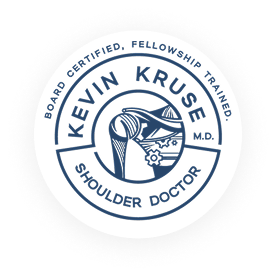Barbotage might not be a term you hear every day, but within medical circles—especially in orthopedic and musculoskeletal care—it holds real significance. If you’ve ever suffered from a calcific tendonitis or experienced joint-related pain, there’s a chance your doctor may have brought it up. But what exactly is barbotage, how does it work, and when is it used?
Let’s break it down in a clear, digestible way—no white coats needed.
What is Barbotage?
Barbotage, in simple terms, is a minimally invasive medical procedure used to remove calcium deposits from soft tissues, particularly in joints. It’s commonly applied in treating calcific tendonitis, especially of the shoulder.
The term “barbotage” is derived from a French word meaning “to shake” or “agitate,” which pretty accurately describes the procedure’s technique—flushing and suctioning a liquid in a joint or soft tissue area to loosen and remove unwanted material.
Why is Barbotage Performed?
Barbotage is typically recommended for people dealing with persistent pain or limited mobility due to calcium deposits in the tendons. These deposits, while not always painful, can cause inflammation and restrict movement when they become large or inflamed.
Here’s when barbotage might come into play:
- Chronic calcific tendonitis that doesn’t improve with rest or physical therapy
- Severe pain that interferes with daily activities
- Restricted range of motion in the affected joint
- Failed response to medications or steroid injections
How Does Barbotage Work?
The procedure is usually done under ultrasound guidance, which helps the physician visualize the calcium deposit and guide the needle precisely.
Here’s a general outline of what happens during a barbotage procedure:
- Ultrasound Setup: The affected area is scanned to locate the calcium deposit.
- Local Anesthetic: A local anesthetic is injected to minimize discomfort.
- Needle Insertion: A needle is inserted into the calcium deposit.
- Flushing: A saline solution is injected into the area to break up the deposit.
- Aspiration: The loosened calcium and saline are suctioned out through the same or another needle.
Sometimes, a steroid injection is added at the end of the procedure to reduce inflammation and prevent recurrence.
Benefits of Barbotage
- Minimally invasive: No need for general anesthesia or large incisions.
- Quick recovery: Many patients return to normal activity within days.
- Effective: High success rate in reducing pain and improving joint function.
- Low risk: Few complications when performed correctly.
Are There Any Risks?
While generally safe, barbotage isn’t completely without risk. Some possible (but rare) complications include:
- Infection at the injection site
- Temporary soreness or bruising
- Incomplete removal of calcium deposits
- Recurrence of the calcification
Always consult a trained physician to assess whether barbotage is suitable for your specific condition.
What to Expect After the Procedure
After barbotage, patients are often advised to:
- Rest the affected area for 24–48 hours
- Apply ice packs to reduce swelling
- Avoid strenuous activities for a few days
- Attend follow-up appointments to monitor progress
Most people experience significant relief within a week or two, though full healing might take a bit longer depending on the severity of the condition.
Who Performs Barbotage?
Barbotage is typically carried out by specialists such as:
- Radiologists trained in musculoskeletal procedures
- Orthopedic physicians
- Sports medicine professionals
Ultrasound expertise is key, so it’s important to have the procedure done in a facility that routinely handles guided interventions.
Barbotage may sound complex, but it’s essentially a straightforward and smart solution for managing painful calcium build-up in joints. By blending modern imaging with gentle aspiration techniques, this procedure helps people get back to their lives without the need for more aggressive treatments like surgery.
If you’ve been dealing with stubborn joint pain and conservative measures haven’t helped, barbotage might just be worth a conversation with your doctor.
FAQs About Barbotage
1. Is barbotage painful?
Most patients report only mild discomfort. A local anesthetic is used to numb the area, making the procedure tolerable.
2. How long does the procedure take?
Typically around 30 to 60 minutes, including prep and post-procedure monitoring.
3. Will the calcium deposits come back?
While recurrence is possible, many patients enjoy long-term relief after a successful procedure.
4. Can barbotage be done on other joints besides the shoulder?
Yes, though it’s most common in the shoulder, it can also be applied to the hip, elbow, or wrist in some cases.
5. Do I need physical therapy after barbotage?
Your doctor might recommend light exercises or a short course of physical therapy to restore movement and strength.
The information in this article is for educational purposes and Dr Kruse may recommend alternate treatment options to best address the individual patient’s needs.

